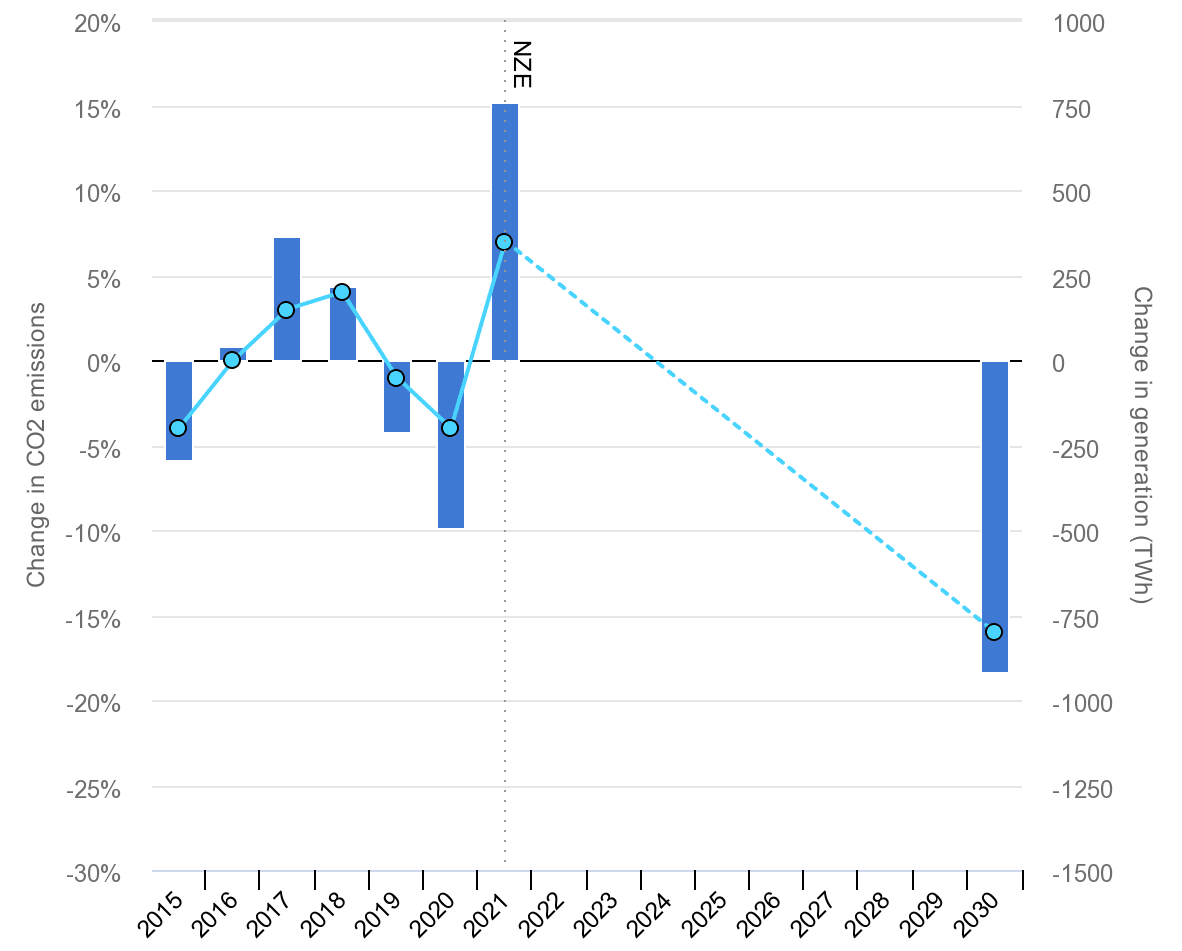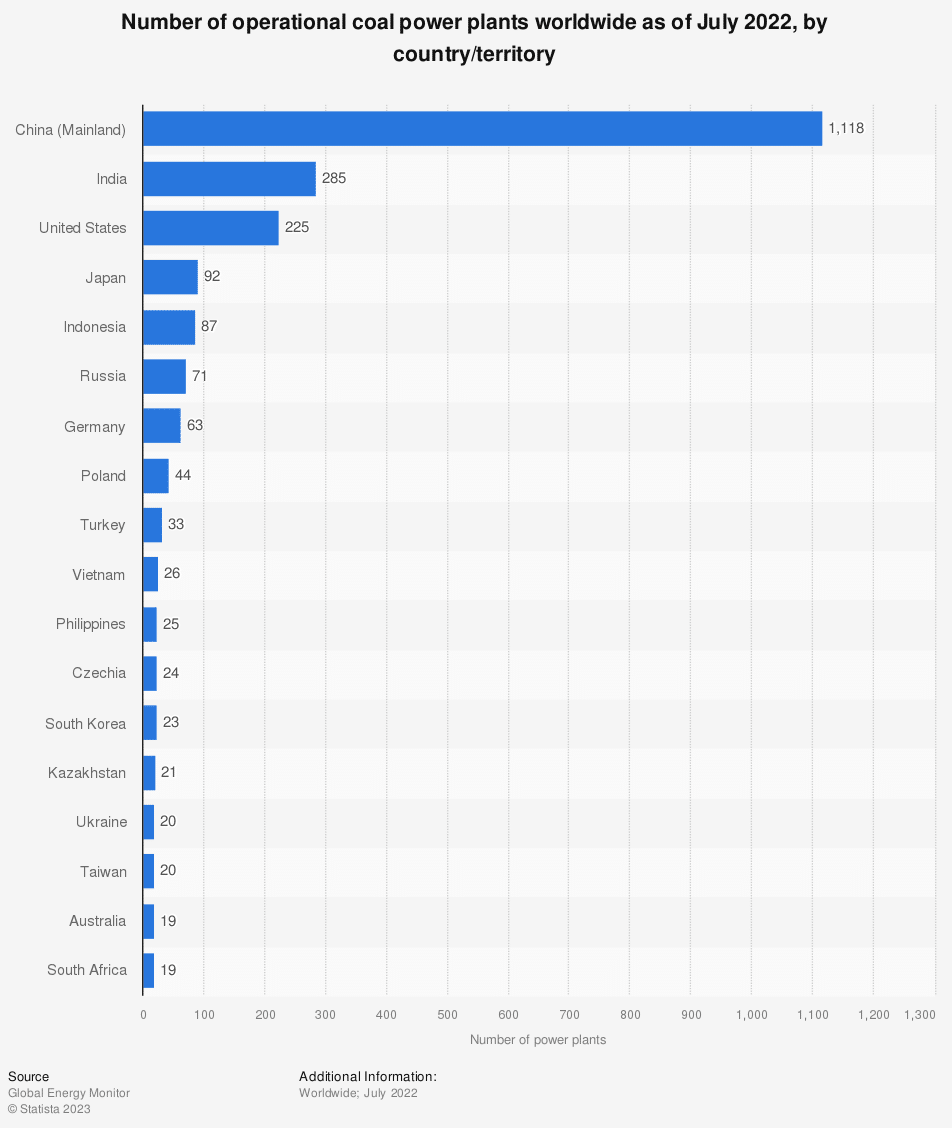A consortium of global experts, Coal to Clean Credit Initiative (CCCI), is developing a world-first “coal-to-clean” carbon credit program that incentivizes the transition away from coal-fired power plants to renewable energy in emerging economies.
The group includes the Rockefeller Foundation, Global Energy Alliance for People and Planet (GEAPP), with support from South Pole, Climate Policy Initiative (CPI), and Rocky Mountain Institute (RMI).
The new carbon credits under development will be called coal-to-clean credits.
What are Coal-to-Clean Credits?
As of July 2022, the total number of coal power plants operating globally is around 2,195, according to Statista. They accounted for over a third of total electricity generation.
China, which accounts for over 50% of global coal electricity generation, has the most coal-fired power stations worldwide – 1,118. That number is about 4x the total power plants in India, which came second in ranking.
Many of those plants have no financial incentives to retire early, allowing them to emit more CO2. In fact, coal-fired power generation reached an all-time high in 2021, also pushing emissions to record levels.
Power stations in China alone reached a record high of 8 billion metric tons of CO2 in the same year. These trends don’t align with the Net Zero Emissions by 2050 scenario shown below. It calls for about 9% annual reduction in unabated coal-fired generation between 2022 and 2030.
Annual change in CO2 emissions and generation from unabated coal-fired power plants in the Net Zero Scenario, 2015-2030

Unfortunately, more than 90% of the coal power plants today are protected from competition either because of regulation or long-term contracts. Also, 40 countries pledged to phase out their coal-fired power plants during the climate conference, COP26, in 2021.
But the 3 giant economies owning the most operational stations didn’t agree to the terms of phase-out.
To address these concerns, the CCCI is working on a methodology to develop a world-first approach to speed up the phase-out of coal power plants. The goal is also to provide financial incentives for the owners to partially or fully replace those with clean power.
The revenue from selling the CCCI’s “coal-to-clean” carbon credits will incentivize plant owners to invest in renewable energy. The funds will also help the affected workers and communities during the transition.
The consortium devised a detailed concept for its new carbon credits. They sought technical input from industry experts and identified real-world examples most suited for generating the credits.
The ultimate goal of creating the coal-to-clean credits is to avoid tens of millions of tons of CO2 emissions from coal.
And that’s possible for just one plant if it’s “retired and replaced by cleaner power decades ahead of its planned closure”, says Joseph Curtin, Managing Director at The Rockefeller Foundation. He further points out that:
‘’If we are to avoid the threat of over 2 degrees Celsius of global warming, we must provide a credible pathway for coal plants in emerging economies to transition sooner.”
CCCI’s Approach to Coal Phase-out
The CCCI’s approach to early coal phase-out follows a just transition as it will be in partnership with local communities for every project. The initiative will ensure that affected communities have a crucial role to play during the transition.
The aim is that CCCI will set a new benchmark for carbon-financed projects while ramping up the global coal-to-clean transition. To do that, the group will provide a nearer-term opportunity at the project level while aligning with jurisdictional methods and systems of decarbonization.
The team is aware that coal plants are national assets integrated within a country’s power system. So, retiring them earlier than planned needs careful consideration and talks with the authorities.
In this case, CCCI explores a unique way in mobilizing finance via carbon credits to achieve its goal. The alliance will also consider integration of their credits with existing and future compliance and voluntary carbon markets.
Doing so allows them to complement other carbon market and climate finance initiatives. They also support broader carbon market improvement by growing the supply of high-integrity carbon credits with clear standards for buyers.
Who Leads the CCCI?
The Global Energy Alliance for People and Planet (GEAPP) leads the CCCI. GEAPP is an alliance of philanthropy, governments in emerging and developed economies, and technology, policy, and financing partners. Their mission is to enable emerging economies to shift to clean energy.
The Rockefeller Foundation, which also focuses on scaling renewable energy for all, joins GEAPP, along with their implementing partner South Pole. The group is further supported by technical experts from CPI and RMI.
Altogether, the team ensures that CCCI’s methodology meets the highest level of environmental integrity and technical best practice.
Currently, they’re able to close a high-level deal with the government of Indonesia and have started scoping work in Vietnam and South Africa. In these regions, the cost of renewable power undercutting fossil fuels in 2030 will bring over 20 million jobs.
The CCCI will start its consultative process to develop its coal-to-clean carbon credit methodology this month. In the coming months, the group will continue to work with industry experts in developing its unique approach to coal-to-renewable projects.
Carbon standards, international finance institutions, and other organizations dealing with financial mechanisms are welcome to engage with the team.
The CCCI aims to start making deals earliest in 2024 and use the program for many plants this decade. The team will present its program at this year’s United Nations Climate Change Conference (COP28) in Dubai in November.


